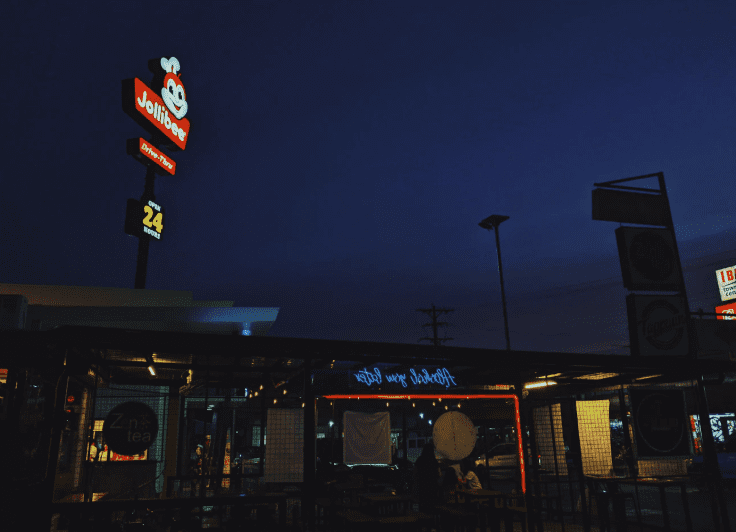Have you ever paused mid-scroll to watch (and tear up at) a Kwentong Jollibee video that felt like a hug?
That’s brand storytelling: timeless, heartfelt, and guaranteed to connect—even in our digital era.
Let’s look into why, and why it matters.
Storytelling Is Far More Likely to be Remembered–and it’s Backed up by Science!
Our brains are wired for stories. In a highly-cited study about dopamine and item retention, many parts of our brain fire dopamine when we experience an emotionally-charged event or hear an equally emotionally-charged story (Clos, Bunzeck, & Sommer, 2019). This is how people remember things more accurately compared to simply reading statistics or seeing a clearly promotional video.
This is backed up by veteran journalist Carmine Gallo. In a 2016 episode of Knowledge at Wharton, she revealed that business majors and businesspeople alike always sought her advice when it came to selling their pitch.
Going deeper into her experience, she mentioned how CEOs thought storytelling was a dying art form.
It’s almost like I had to [write it, especially] when a person like Vinod Khosla, a billionaire venture capitalist in Silicon Valley, where I live, tells me that the biggest problem he sees is that people are fact-telling when they pitch him. They’re giving facts and information and he says, “That’s not enough, Carmine. They have to do storytelling.”
Trust, Humanized Through Real Narratives
Storytelling isn’t just charming–it’s trust‑building.
In one of the most highly cited studies from the Proceedings of the National Academy of Sciences of the United States of America (PNAS, Bavel, Reinero, Spring, Harris, & Duke, 2021), researchers found that personal experiences won people over facts.
To be specific, anecdotes and personal experiences outperform cold, statistical facts presented as arguments in winning empathy and respect. This isn’t to say facts aren’t important; they absolutely are! But they’re only one part of the equation. In PR, stories (weaved with facts) humanize brands. They cut past branding facades and show us the people (or values) behind them.
Storytelling is Cultural
Storytelling is especially powerful with Filipinos. It’s so powerful, it’s cultural!
More than everyday chismis and cheesy teleseryes lies kapwa. In Filipino culture, kapwa (shared identity) and emotion shape so much of everyday life. If anyone wants to resonate with a Filipino audience, this kind of connection hits hard. It’s why those heart-tugging brand films stay with us—and why brands that master storytelling stay on top of every Filipino’s list.
Real Life Filipino Example:
Remember the issue about the (now disproven) high levels of ethylene oxide found in Lucky Me!’s Pancit Canton? Right after the Food and Drug Administration (FDA):
- clarified the issue,
- found that the noodles were safe to eat, and
- discovered that the noodles had lower levels of ethylene oxide than EU’s level of risk
Lucky Me!’s had every option to post statistics and facts on their official website (with bullet points) and call it a day.
They didn’t.
Instead, they worked closely with PR agents and went straight to work with their “Sarap ng Walang Iwanan” ad. Through weaving a story, they narrated from the instant noodles’ perspective. They successfully helped restore trust after a food safety scare, AND reminded everyday people of Pancit Canton’s place in everyday Filipino life.
That’s storytelling with real emotional—and tactful—impact.
(More) Filipino Brands That Excel at Telling Stories That Resonate
Pinoy brands have paid attention and have now grown better at weaving narratives that mirror Filipino values and emotions. Here are a few examples that prove that the best brand stories in the country don’t feel marketed, but genuine..
Kwentong Jolibee
Kwentong Jollibee aren’t just ads—they’re cultural events. In 2016, these vignettes of love, family, sacrifice, and joy, from fast food tycoon Jollibee, won the hearts of Filipinos all over. These short films echo everyday Pinoy experiences so well that they become part of our collective memory.
It’s not about Chickenjoy; it’s about “us.”
Dermorepubliq
Local skincare brand Dermorepubliq has its roots in wanting to cater to Filipino skin. So their viral yet smart campaigns feel like it’s second nature to the brand. A distinct example is their last year’s #DermoCuties campaign. The campaign had billboards teasing “Swipe right to match,” building intrigue before their TikTok takeover—eventually becoming TikTok’s #1 skincare brand during major sale events. That’s hyper-local storytelling (for Gen Z Filipinos) executed with digital flair.
MSD’s Hope From Within
I firmly believe that any industry can tell a story.
For example, local healthcare company Merck Sharp & Dohme (MSD) launched Hope From Within last 2021. Rather than promote their brand, MSD’s campaign used storytelling and digital PR to advocate, teach, and empower Filipinos with knowledge about cancer, cancer awareness and conversations around innovative cancer treatments.
They didn’t just stop with digital pubmats. Hospital posters, online forums, Twitter forums–wherever there were people, there was MSD and their PR and IMC agency.
The results? 65 million Filipinos learned more about cancer awareness and treatments through their campaign. .
But Wait—Is Storytelling Still Effective in a Saturated Digital Landscape?
I’d argue that storytelling matters more today more than ever.
Storytelling is part of the human condition. Even in a hyper‑digital, attention‑scarce world, people still yearn for bits of humanity.
After all, don’t brands cater to people? And algorithms can only do so much to cater to people.
Now, let’s translate these insights into actionable practices:
Best Practices for Filipino Brands Embracing Storytelling
- Start with Why, Not Just What
Shift from “We make products…” to “We began because…” Filipinos respond more when brands share motivation rooted in community, resilience, and heart.
- Use Real Voices and Real Faces
Pinoys value authenticity. Some even opt to deinfluence, not influence. Feature founders, team members, or even customers.
Let real stories shine—not polished personas.
Make the Customer the Hero
Your brand isn’t Superman. Your customers are.
Be the guide in their story. That shifts messaging from “Look at us!” to “We’re here for you.”
Stretch Your Story Across Channels
From your homepage to product pages, email campaigns to TikTok reels…consistency in storytelling across all platforms builds trust and recall.
Don’t just post. Integrate. Weave like tapestry.
Be Strategic, Not Salesy
People support people. To sell. start relating first.
Blend storytelling with subtlety. Offer value, not just promo. Try sharing:
- insights,
- behind-the-scenes looks, or
- relatable experiences—not just promo.
To Wrap this Story Up
Stories beat statistics. Period. So weave the statistics into the story.
We get it. Storytelling takes time, insight, and creative finesse. That’s why working with a PR and IMC agency like NGP IMC can turn good stories into powerful, memorable narratives. Through strategic storytelling—across platforms and channels—your brand can not only be seen but *felt*.
Need help in telling your “why?” NGP IMC can help! From healthcare to education, their portfolio showcases a wide variety of industries and experiences. From experience, nothing is too big of a challenge for them

Kriztin Cruz is a recruitment and digital marketing professional, freelance writer, hobbyist painter, and frustrated sociologist–with too many things to want and too little time to spare. She graduated with a Psychology degree in 2019 at De La Salle – College of Saint Benilde Antipolo. When she’s not drafting a corporate letter or working on anything digital marketing, you can find her doing the following, but not in this order: reading a good book, scavenging for a good book, sketching, painting, journaling, junk journaling, obsessing over an obscure Czechoslovakian surrealist film (or anything by Miyazaki or Del Toro), cooking, finding a cafe to relax in, and creating new things while a nice documentary plays in the background.


